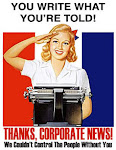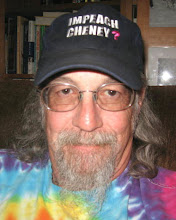Also in War on Iraq
Iraqis Pour into Street to Protest U.S. Security "Agreement"
U.S. Government to U.S. Mercenaries: Say Goodbye to Immunity in Iraq
Revealed: Gulf War Syndrome is Real, Caused by Pills and Pesticides
Kim Sengupta
Yes We Can Cut the Defense Budget: Why it's Time to Stop the Military Spending Spree
Katrina vanden Heuvel
A War Without End: Savagery in Afghanistan is Centuries Old
Robert Fisk
Nina Berman is an award-winning documentary photographer with a keen interest in America's social and political landscape. Her first book, Purple Hearts: Back From Iraq, is a collection of portraits and interviews of wounded soldiers who have returned home. Her photograph of a severely disfigured Iraq veteran and his bride on their wedding day won the World Press Photo competition for portraiture in 2006.
Berman's new book, Homeland, depicts the evolution of the "American security state" from 2001 to 2007. Berman traveled around the country, photographing gun shows, SWAT team training, a public military academy for juvenile delinquents and endless drills and simulations designed to prepare Americans of all ages to respond to someone's idea of a terrorist attack. Berman began the project after the terrorist attacks of Sept. 11, 2001.
"I started shortly after 9/11, (after I) started seeing things that struck me as odd -- examples of security -- and not knowing whether this was a rational response to a real threat or whether it was all theater."
Berman started shopping the book around in 2003, but soon realized it wasn't ready. Setting the project aside, she turned her attention to reporting on wounded soldiers. When she returned to her Homeland series, she had renewed energy. "One reason I thought it was important was because many of the soldiers I interviewed said they thought war was going to be fun," Berman explains. "This book is about how we visualize war."
A lot of "homeland security" requires us to imagine what a terrorist attack would be like. As we are continually reminded by authorities, we don't know what the terrorists might do next. So, how do you educate and train people to respond to a hypothetical threat? And to what extent do terror-readiness exercises provide a stage to act out our fantasies about war, rather than provide reality-based simulations of known threats?
Fantasy isn't just for domestic consumption. Berman visited a military training facility at Fort Polk, La., known as The Box. The Box is a simulated Iraq, set on 100,000 acres, populated with Arabic-speaking Iraqi employees. The facility has 18 mock villages populated by 1,000 role-players who simulate Iraqi civilians and insurgents.
Many of the simulated Iraqis are, in fact, Iraqi immigrants. Berman explains that play-acting as insurgents can be a full-time job. You don't have be an immigrant or an Arabic speaker to play a role in the Fort Polk drama. Plenty of Anglophone locals consider it their patriotic duty to simulate terrorists to educate the troops about the real Iraq.
Army recruits go into The Box to train for their deployment to Iraq. One of Berman's photos taken at Fort Polk shows a cinderblock box with a sign, in Arabic and English, that reads "Freedom School."
"You go [to The Box] for a couple weeks; you're supposed to learn about the culture," says Berman. "This is where I step back and say 'what's really going on?' It's one thing to build an Iraqi village for training and say, 'OK, this might happen' … But once you start building Freedom School, what are you really making? Who's imagination is this? Is this supposed to be someplace in Iraq? (Or) is this someone's fantasy of what Iraq is?"
As Berman demonstrates, sometimes reality intrudes in unexpected ways, like in the case of GI Goat, a rust-colored baby goat who is shown in the book standing sleepily next to a military vehicle. At Fort Polk, Berman noticed an area full of farm animals. The public affairs officer explained that GIs encounter farmers during some training scenarios; someone decided that the faux farmers needed real livestock -- but real animals brought real complications.
"The animals were reproducing, especially the goats. You had all these baby goats, so they had to hire people to look after the animals," Berman explains. "All of the goats are government property. According to the 'farmer,' if one of them dies there's a lot of paperwork.
"It seemed like a good idea. Who wouldn't want training? If it's going to resemble what they would encounter, that could be a good thing. But there are no boundaries. It's an opportunity for fantasies to just rage. A public affairs officer said they thought it would be helpful to simulate the smell of Iraq. So they tried that in a small part of village. It didn't really work. But it wasn't a joke, it was a serious discussion."
See more stories tagged with: iraq, homeland, homeland security, nina berman, photojournalism
Lindsay Beyerstein is a New York writer blogging at majikthise.typepad.com




























No comments:
Post a Comment